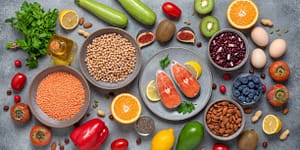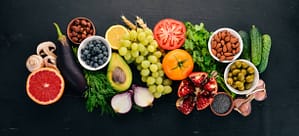
Health enthusiasts are quick to purchase products containing antioxidants. The presence of antioxidants, whether in food or skincare products, is often equated with health benefits and, crucially, properties that may slow down aging. The term “antioxidant” is a key phrase in the health industry. So, what’s the excitement about antioxidants? What are they, and how do they work? And most importantly, where are they found in abundance?
Antioxidants are essential molecules that safeguard cells against oxidative stress, which is linked to aging and various chronic diseases. This stress happens when there’s an imbalance between free radicals—unstable molecules with unpaired electrons—and the body’s ability to counteract them. Free radicals, mainly byproducts of internal biological processes, can harm cells, proteins, and DNA, contributing to diseases like heart disease, cancer, and neurodegenerative disorders. Antioxidants neutralize oxidative stress by donating electrons to stabilize free radicals, thus preventing further damage. They act as defenders, interrupting the chain reactions started by free radicals and protecting cellular structures.
The buzz around antioxidants in the health industry stems from their connection to multiple health benefits and potential role in preventing chronic diseases. Celebrated for neutralizing free radicals, which are associated with cell damage and aging, antioxidants have gained popularity. The belief that they can counteract oxidative stress, implicated in heart disease, cancer, and neurodegenerative disorders, has driven consumer interest in antioxidant-rich foods, supplements, and skincare products. This trend is bolstered by increasing awareness of environmental factors, stress, and poor lifestyle choices’ impact on health.

Free radicals are unstable, highly reactive molecules with unpaired electrons. They emerge as natural metabolic byproducts or from external sources like UV radiation, pollution, and unhealthy diets. Seeking stability, free radicals steal electrons from other body molecules, initiating oxidative stress that can cause extensive harm. This stress damages cellular structures, including proteins, lipids, and DNA. Without proper repair, this damage can lead to mutations, inflammation, and disrupted cellular functions. Over time, oxidative stress contributes to aging and various chronic diseases. The body’s natural defense, including antioxidants, aims to neutralize free radicals, but an imbalance in this process can worsen health issues and accelerate aging.
A wide variety of foods, particularly those plant-based, are rich in antioxidants. Fruits and vegetables are excellent sources, offering vitamins C and E, beta-carotene, and various plant compounds like flavonoids and polyphenols. Berries, citrus fruits, kiwi, and leafy greens are especially rich in vitamin C, while nuts, seeds, and vegetable oils are good sources of vitamin E. Beta-carotene, found in orange and yellow fruits and vegetables like carrots, sweet potatoes, and mangoes, is a potent antioxidant and vitamin A precursor. Selenium, another antioxidant, is available in seafood, nuts, and seeds. Herbs and spices such as turmeric, cinnamon, and oregano are also known for their antioxidant properties.
While antioxidants are beneficial, caution is advised, especially with supplements. Excessive intake can have negative effects and disrupt the body’s balance. Relying only on supplements may also overlook other vital nutrients from a diverse diet. It’s better to focus on natural antioxidant sources through fruits, vegetables, and whole foods. Consult a healthcare professional before adding antioxidant supplements to your regimen, ensuring they suit your health needs and don’t interact with any medications.
Read Also: Fitness, diet, and mental health tips to boost wellness in 2024